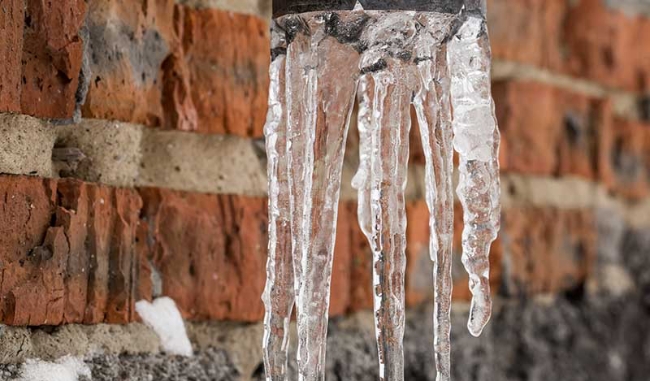How do you actually feel with regards to Winter Plumbing Precautions: Preventing Frozen Pipes?

Winter can ruin your plumbing, specifically by freezing pipes. Below's exactly how to stop it from taking place and what to do if it does.
Intro
As temperatures decline, the danger of icy pipes boosts, possibly resulting in pricey fixings and water damages. Understanding exactly how to prevent icy pipelines is important for property owners in chilly environments.
Prevention Tips
Shielding at risk pipes
Wrap pipelines in insulation sleeves or utilize heat tape to shield them from freezing temperature levels. Concentrate on pipes in unheated or outside areas of the home.
Heating techniques
Maintain interior areas appropriately warmed, particularly areas with pipes. Open cabinet doors to allow cozy air to flow around pipelines under sinks.
Just how to determine icy pipes
Try to find reduced water flow from taps, unusual smells or noises from pipes, and visible frost on exposed pipelines.
Long-Term Solutions
Architectural adjustments
Take into consideration rerouting pipes away from outside wall surfaces or unheated areas. Add additional insulation to attics, cellars, and crawl spaces.
Updating insulation
Buy premium insulation for pipes, attics, and walls. Proper insulation assists keep constant temperature levels and decreases the threat of icy pipes.
Protecting Outside Plumbing
Yard hose pipes and exterior faucets
Detach and drain pipes yard pipes before winter months. Install frost-proof spigots or cover outside taps with protected caps.
Understanding Frozen Pipelines
What creates pipelines to ice up?
Pipelines ice up when subjected to temperature levels below 32 ° F (0 ° C) for expanded durations. As water inside the pipes ices up, it expands, taxing the pipe walls and potentially triggering them to rupture.
Threats and damages
Icy pipes can cause water disturbances, property damages, and pricey repair services. Burst pipes can flooding homes and trigger substantial structural damage.
Indicators of Frozen Pipeline
Identifying icy pipelines early can prevent them from breaking.
What to Do If Your Pipes Freeze
Immediate actions to take
If you think frozen pipes, keep faucets open up to soothe pressure as the ice melts. Make use of a hairdryer or towels soaked in warm water to thaw pipelines gradually.
Conclusion
Preventing icy pipelines requires positive steps and fast responses. By understanding the causes, indications, and safety nets, homeowners can safeguard their pipes during winter.
5 Ways to Prevent Frozen Pipes
Drain Outdoor Faucets and Disconnect Hoses
First, close the shut-off valve that controls the flow of water in the pipe to your outdoor faucet. Then, head outside to disconnect and drain your hose and open the outdoor faucet to allow the water to completely drain out of the line. Turn off the faucet when done. Finally, head back to the shut-off valve and drain the remaining water inside the pipe into a bucket or container. Additionally, if you have a home irrigation system, you should consider hiring an expert to clear the system of water each year.
Insulate Pipes
One of the best and most cost-effective methods for preventing frozen water pipes is to wrap your pipes with insulation. This is especially important for areas in your home that aren’t exposed to heat, such as an attic. We suggest using foam sleeves, which can typically be found at your local hardware store.
Keep Heat Running at 65
Your pipes are located inside your walls, and the temperature there is much colder than the rest of the house. To prevent your pipes from freezing, The Insurance Information Institute suggests that you keep your home heated to at least 65 degrees, even when traveling. You may want to invest in smart devices that can keep an eye on the temperature in your home while you’re away.
Leave Water Dripping
Moving water — even a small trickle — can prevent ice from forming inside your pipes. When freezing temps are imminent, start a drip of water from all faucets that serve exposed pipes. Leaving a few faucets running will also help relieve pressure inside the pipes and help prevent a rupture if the water inside freezes.
Open Cupboard Doors
Warm your kitchen and bathroom pipes by opening cupboards and vanities. You should also leave your interior doors ajar to help warm air circulate evenly throughout your home.
:strip_icc()/snow-outdoor-faucet-pipes-4af65d1e5e904fb1aa7bf74071fe5d89.jpg)
We were made aware of that report on Helpful Tips to Prevent Frozen Pipes this Winter from an associate on our other website. Appreciated our content? Please quickly share it. Let others locate it. Many thanks for taking the time to read it.
Call Today